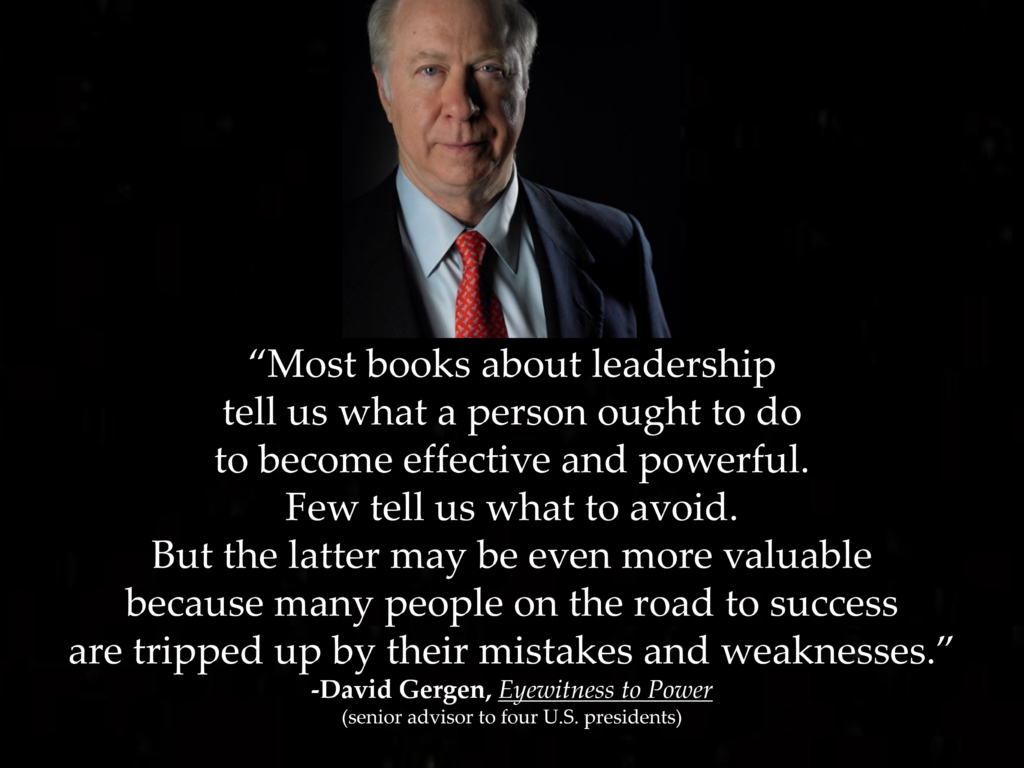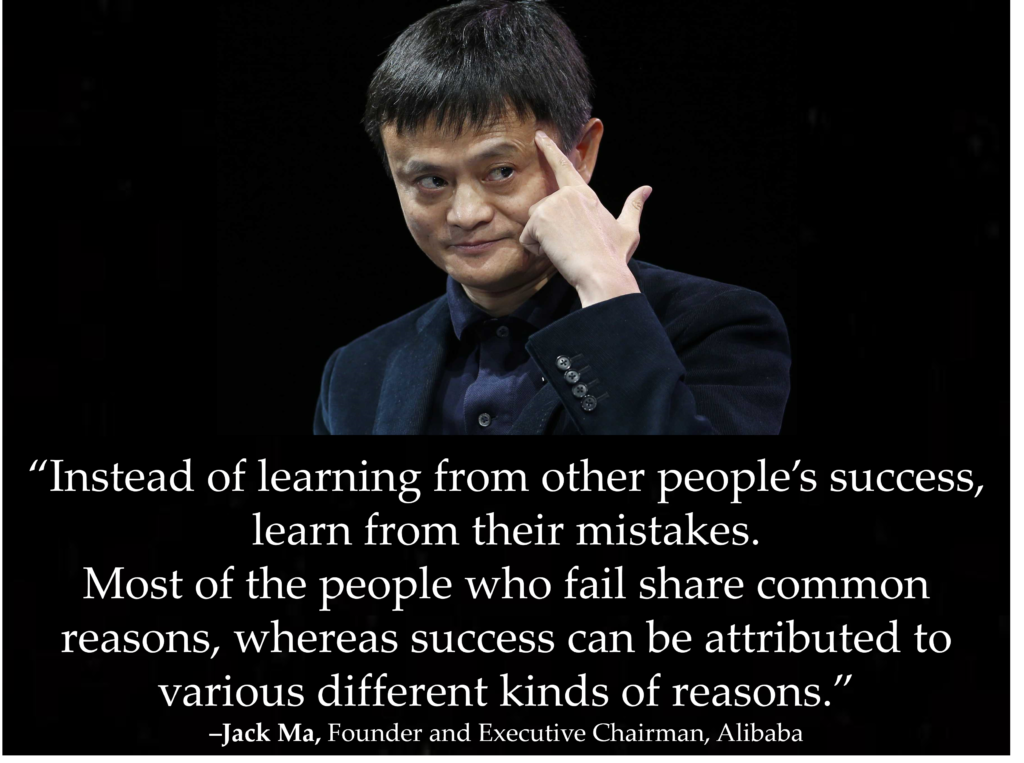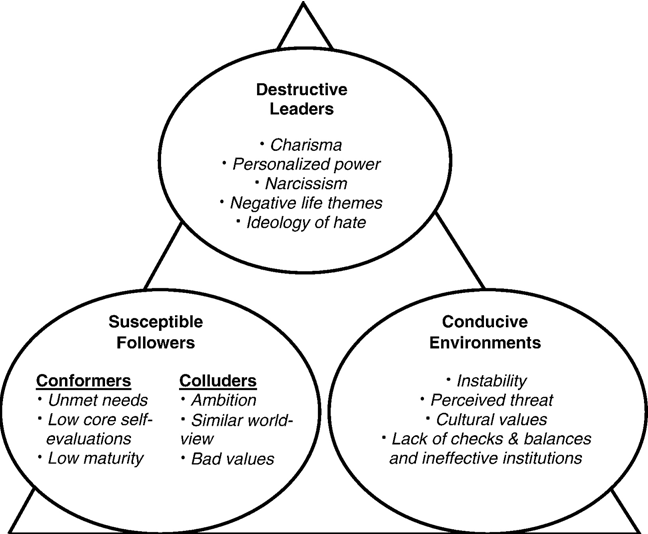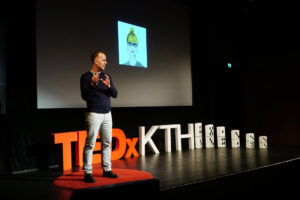In our work with leaders across sectors and industries, we often get asked about how people can “lead from below”: how they can exert influence on the organization and its culture even when they do not have much (or any) formal authority, or when they work in middle management, or when they work for a bad or mediocre manager, or for a company with a toxic culture.
The short answer: you can do much more than you think.
Ronald Heifetz from Harvard has noted that, since we tend to conflate leadership and authority, even the idea of leading without authority can be perplexing. Authority is the right to make decisions, give orders, and enforce obedience. There are many leaders who operate that way, but leadership is fundamentally different.
Leadership without Authority
Much of the important leadership we’ve seen in organizations comes not just from people with authority but also from people throughout the organization, regardless of their title. We have seen brilliant leadership in action from people with little authority, from new people, from interns.
One of the advanced leadership practices we advocate in our Triple Crown Leadership book, based on our interviews with 61 organizations in 11 countries, is unleashing the latent leadership, creativity, and agency of people throughout the organization—viewing them as “stewards” of the organization’s shared purpose, values, and vision and its quest to be excellent, ethical, and enduring. That means developing and expecting leadership not just from above but also from below. That means that everyone has essentially two job descriptions: first, their normal duties, and second, defending the organization’s results imperative, ethics imperative, and sustainability imperative.
The Dangers of Leading from Below
In addressing how to lead from below, we first note that there are real dangers associated with it. When handled poorly, it can cause real problems. You can become a lightning rod. Or you can be attacked. You can be the messenger who gets shot, or become the scapegoat. Truth be told, you can lose your job.
Some managers view leading from below by those they supervise as a challenge or insult. If they are insecure or arrogant, they may attack or punish you. Other times, your colleagues will view it as an attack on the group, and they may feel obligated to isolate you out of loyalty to the group. When leading without authority, you should expect some resistance, and you need to play it smart.
Note also that there are great rewards possible from leading from below, both for you and the organization. Here are some tips based on our own experiences and what we have seen in the leadership literature.
1. Embrace your own potential and abilities.
Too often, followers give too much deference to their leaders and relinquish their own power and responsibility. With a more enlightened viewpoint, you may find that you have more potential and influence than you think arising from your knowledge, skills, relationships, work ethic, and access to information or people.
Too often, followers give too much deference to their leaders or are too quick to throw up their hands and abdicate responsibility for what is happening in the organization, pointing fingers of blame at their colleagues who happen to be in positions of authority. The best followers do all they can to help the organization achieve its purpose, vision, and goals while operating within the bounds of values and ethics.
This means shaking things up, taking risks, and helping leaders get better (e.g., by informing them of problems they may not be aware of, raising tough issues, asking provocative questions, letting their manager know what they need to succeed, and developing relationships of trust with all they work with). We should also check our beliefs about our leaders: do we hold them to unrealistic expectations of perfection or judge them too harshly even when we may not be aware of all the challenges they face, with the pressures and demands of leadership? Have we walked a mile in their shoes?
Too many people wait to be anointed before acting, or for conditions to be “just right” (which almost never happens). In Leadership without Easy Answers, Ron Heifetz writes, “many people wait until they gain authority, formal or informal, to begin leading. They see authority as a prerequisite. Yet those who do lead usually feel that they are taking action beyond whatever authority they have.”
4. Look for ways to increase your leverage by building informal authority.
People generally respond positively to leadership regardless of whether it comes from positions of authority or not. Build up your bank account of informal authority by first and foremost establishing credibility through character and competence, as well as demonstrating trustworthiness, respect, courage, clarity, commitment, and effective communication and listening (even to people with whom you disagree).
5. Clearly establish your loyalty to the organization’s purpose, values, and vision.
That way, people know this is not a power play or selfish ambition. It must be clear beyond a shadow of a doubt that you have your colleagues’ and the organization’s best interests at heart. Be thoughtful about how you communicate to your colleagues, taking nothing for granted.
6. Identify allies, relevant stakeholders, and potential adversaries.
Map out all the people, teams, and divisions involved, and see things from their perspective. Recruit as many allies as you can, especially those with deep credibility, influence, and insight into the organization—thinking also about who is trustworthy. Be open to new ideas, recognizing that you may be missing something that you cannot see clearly from your perch, and that other people come at it from a different perspective.
7. Determine your best approach.
Will you try to get results by changing the mind or behavior of your manager or management team. Or mobilize colleagues around you as change agents (or some combination)? Too often, followers assume that they have to do the former, but in many cases the latter approach can be more effective over time.
8. Recognize that by lacking authority you have some advantages.
The cons of lacking authority are clear and obvious, such as lacking power over people and resources. The pros are less obvious but often important, including more latitude to do things differently, freedom from political limitations, less need to account for an overwhelming array of stakeholders often with conflicting interests, more access to information on the front lines, and an ability to advocate for focused issues as opposed to the full array of considerations.
9. Speak up and raise concerns when needed.
This is one of the most important aspects of leading from below, in part because it is so rare. According to the Corporate Executive Board (now part of Gartner), “Nearly half of all executive teams fail to receive negative news that is material to firm performance in a timely manner because employees are afraid of being tainted by the bad news, and “only 19% of executive teams are always promptly informed of bad news that is material to firm performance.” Leadership expert Warren Bennis wrote, “If I had to reduce the responsibilities of a good follower to a single rule, it would be to speak truth to power.”
How to speak up when needed? First, get all the facts and avoid jumping to conclusions. Our brains make extensive use of mental shortcuts and these can often lead to mistaken assumptions or biases. If the issue is in fact real, address it directly with the person in question, but ask and learn first (seeking to understand). No guns blazing with accusations. Be open to their input and try to see things from their perspective.
If not satisfied or resolved after dealing directly with the person involved, then go up the chain of command to object or blow the whistle. Meanwhile, consider seeking allies (and legal or human resources help, if needed).
10. Be prepared to walk away, if need be.
Before assuming too much risk, think through your professional options (i.e., where would you work if you left this organization) and your personal and family finances. Have you been living lean and diligently building up savings and investments so that you are not living paycheck to paycheck and beholden to an organization that may no longer fit with your values or goals?
The best way to develop one’s own leadership skills is to practice leadership, even if one lacks the formal authority to lead. Leading from below is never easy and not without risk, but it is a powerful way to learn while also providing a great service to your colleagues and organization.
Post-Script: Research on Leading from Below and Followership
There are many research findings that relate to the question of “leading from below,” and many of them arise from the study of “followership.” For example, Kelley (1992) created a widely known typology of followership:
- Passive followers: look to the leader for direction and motivation
- Conformist followers: are always on the leader’s side but still looking to the leader for direction and guidance
- Alienated followers: think for themselves and exhibit a lot of negative energy
- Pragmatics: fence-sitters who support the status quote but do not get on board until others do
- Exemplary followers: are active and positive and offer independent constructive criticism
Kelley notes that effective followers are good at: leading themselves and thinking for themselves, exercising control and independence, and working without supervision; showing strong commitment to organizational goals as well as their personal goals; building their competence and mastering job skills; being credible, ethical, and courageous.
Follower Typology
Chaleff (2009) encouraged followers to take a proactive role and work with leaders to achieve common outcomes. He noted that followers need the courage to: assume responsibility for the common purpose, support the leader and the organization, constructively challenge the leader if the common purpose or integrity of the group is being threatened, champion the need for change when necessary, and take a moral stand that is different from the leader’s to prevent ethical abuses. His follower typology:
- Resource (low support, low challenge): does just enough to get by
- Implementer (high support, low challenge): supports and gets the work done but fails to challenge the leader’s goals and values
- Individualist (low support, high challenge): speaks up and lets the leader know where he/she stands (often marginalized by others)
- Partner (high support, high challenge): takes individual responsibility and supports the leader but always willing to challenge the leader when necessary
In another typology from Kellerman (2008), followers can be: isolates (completely unengaged), bystanders (observers who do not participate), participants (partially engaged and willing to take a stand on some issues), activists (determined to act on their own belief, often as change agents), or diehards (engaged to the extreme, totally dedicated to their cause, whether supporting or opposing the leader).
The Positive Aspects of Being a Follower
Too often, the research lionizes the leader (what Meindl called a “romance of leadership”), while neglecting the contributions of followers. Recent research highlights the positive aspects of being a follower, including:
- Getting the job done
- Working in the best interest of the mission
- Learning from leaders
- Supporting leaders
- Challenging leaders
Toxic Leaders
In The Allure of Toxic Leaders, Jean Lipman-Blumen addresses the question of why people follow bad or toxic leaders (who are unethical or use people or their position for their own ends). She points to a number of human needs, desires, feelings, and fears, including: need for reassuring authority figures (especially in times of crisis), need for security and certainty, need to feel chosen or special, need to be part of a community, fear of isolation, and feelings of powerlessness to challenge bad leaders.
In Leadership: Theory and Practice, Peter Northouse writes about the cost of followers who fail to stand up to toxic leaders: “when followers are passive or submissive, their inaction can contribute to unfettered leadership and unintentionally support toxic leaders…. Followers can create contexts that are unhealthy and make it possible for leaders who are not interested in the common good to thrive.”
In The Leadership Experience (2005), Richard Daft notes several demands of effective followers, including:
- The will to assume responsibility for personal behavior and its impact on the organization
- The will to serve the needs of the organization and the people in it
- The will to challenge when necessary, including taking courageous stands for principles
- The will to participate in transformation, including confronting challenges and work toward reshaping the organization
- The will to leave when the manager or organization are toxic or unethical or when it is time to move on to another phase of life
In Exit, Voice, and Loyalty, Albert Hirschman noted that employees have several options when they are dissatisfied with their manager or organization:
- Neglect: allow conditions to worsen
- Loyalty: passively wait for conditions to improve
- Voice: active and constructive attempts to improve conditions
- Exit: leave the organization
Tools for You
Related Books and Articles
- Ira Chaleff, The Courageous Follower: Standing Up to and for Our Leaders, third edition (Berrett-Koehler, 2009).
- Richard Daft, The Leadership Experience (Thomson Southwestern, 2005).
- Amy E. Gallo, “How to Speak Up about Ethical Issues at Work,” Harvard Business Blogs, June 2015.
- Ronald Heifetz, Leadership without Easy Answers (Harvard University Press, 1994)
- Albert Hirschman, Exit, Voice, and Loyalty: Responses to Decline in Firms, Organizations, and States (Harvard University Press, 1970).
- Barbara Kellerman, “What Every Leader Needs to Know about Followers,” Harvard Business Review, December 2007.
- Robert Kelley, The Power of Followership (Consultants to Executives and Organizations, 1992).
- Jean Lipman-Blumen, The Allure of Toxic Leaders (Oxford University Press, 2006).
- Peter Northouse, Leadership: Theory and Practice, eighth edition (SAGE Publications, 2019).
- Ronald Riggio, Ira Chaleff, and Jean Lipman-Blumen, The Art of Followership (Jossey-Bass, 2008).
++++++++++++++++++++++++++++++
Gregg Vanourek is a writer, teacher, and TEDx speaker on leadership and personal development. He is co-author of three books, including LIFE Entrepreneurs: Ordinary People Creating Extraordinary Lives (a manifesto for integrating our life and work with purpose, passion, and contribution) and Triple Crown Leadership: Building Excellent, Ethical, and Enduring Organizations (a winner of the International Book Awards). Check out his Best Articles or get his monthly newsletter. If you found value in this article, please forward it to a friend. Every little bit helps!























